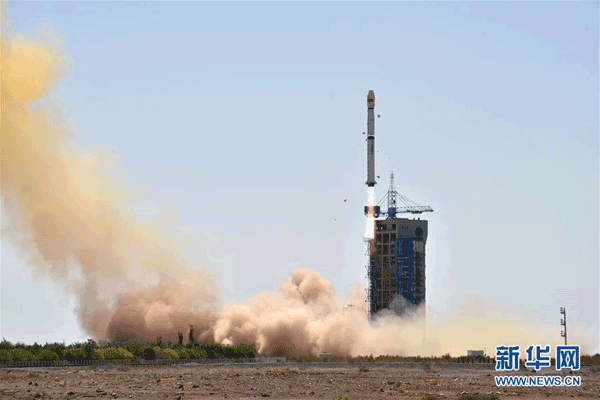Nation launches first space-based X-ray telescope
 |
|
A rocket carrying China's first space-based X-ray observatory blasts off from Jiuquan Satellite Launch Center in Jiuquan, Northwest China's Gansu province, on Thursday. [Photo/Xinhua] |
On Thursday morning, China launched a cutting-edge space telescope, the Hard X-ray Modulation Telescope, which is designed to help scientists better understand the universe, according to project insiders.
The HXMT, jointly developed by the Chinese Academy of Sciences and the China Academy of Space Technology, blasted off at 11 am atop a Long March 4B carrier rocket from the Jiuquan Satellite Launch Center in Northwest China.
The satellite is the nation's first space-based X-ray observatory. With a weight of nearly 2.5 metric tons, the HXMT will be in operation for at least four years in a low-Earth orbit at an altitude of about 550 kilometers, according to the State Administration of Science, Technology and Industry for National Defense, which oversees China's space programs.
The administration said the HXMT carries four scientific devices — three X-ray telescopes and a space environmental detector.
Zhao Jian, a space program official at the administration, said the HXMT will help scientists study the activities of black holes and neutron stars as well as X-ray radiation.
The satellite will also enable engineers to explore ways of using pulsars as benchmarks for a new-generation space navigation technology that they are developing for spacecraft, according to Zhao.
China has launched three science satellites — the Dark Matter Particle Explorer Satellite, Shijian 10 microgravity experiment satellite and Micius quantum experiment satellite.
The nation plans to launch at least four science spacecraft in the near future — the China-Italy Electromagnetic Monitoring Experiment Satellite, China-France Oceanography Satellite and China-France Space Variable Objects Monitor as well as the country's first Mars probe, Zhao said.
The official added that his administration will continue to push forward a number of space-based scientific programs, including the Solar Wind Magnetosphere Ionosphere Link Explorer, Water Cycle Observation Satellite and the Einstein Probe as well as the Magnetosphere-Ionosphere-Thermosphere Coupling Small Satellite Constellation.





















